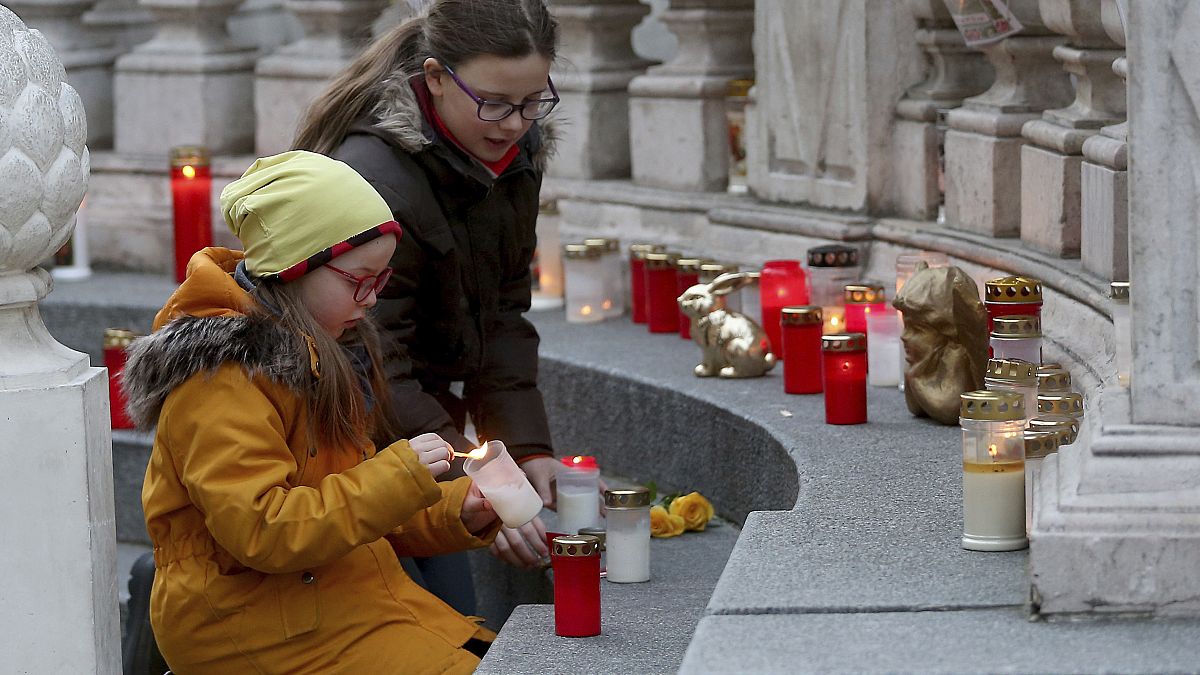Vienna's Plague Column, erected after the Great Plague of 1679, has become a site of pilgrimage as the country battles the COVID-19 pandemic.
Vienna residents worried about the COVID-19 pandemic have turned the city's historic Plague Column into a place of pilgrimage, lighting candles and leaving signs asking for protection.
"Dear God please protect my loved ones from the coronavirus," is one of the pleas left propped up against the column. A child's drawing also reads "protect us from the coronavirus".
The Plague Column or Trinity Column, as it is officially called, was donated by Habsburg Emperor Leopold I after the Great Plague of 1679 in which at least 80,000 people from the city and its suburbs died.
It was then meant as a symbol of victory over the plague — a message of resilience residents have rediscovered and flocked to as the country, like the rest of Europe, battles against the deadly COVID-19 pandemic.
As of Tuesday, Austria has reported more than 9,600 cases of the disease as well as 108 fatalities, according to the European Centre for Disease Prevention and Control.
A local resident who visited the monument told Euronews she prayed "that the world will be a better place and that this crisis will soon be over".
Elena Holzhausen, an art historian for the Catholic Archdiocese of Vienna, told Euronews that "it's good that there are places like this one" where people can express their worries and fears.
"It's a place that reminds of another difficult time," she added.
From the 14th century onwards, the Austrian capital was regularly stricken by the Black Death.
During the last outbreak in 1713, the city imposed strict measures including the creation of quarantine zones and cordoning off entire hospitals to plague patients only which eventually paid off.
